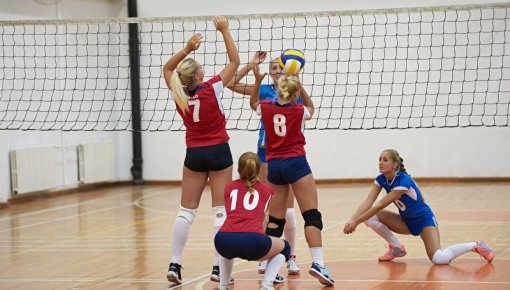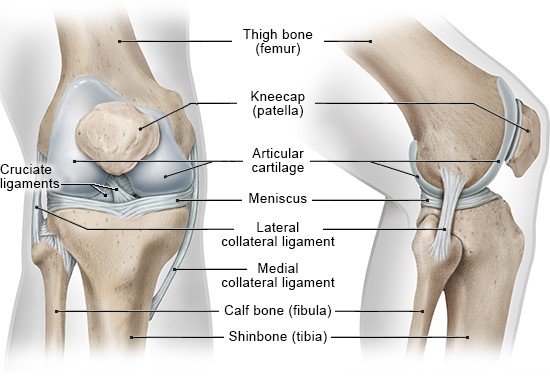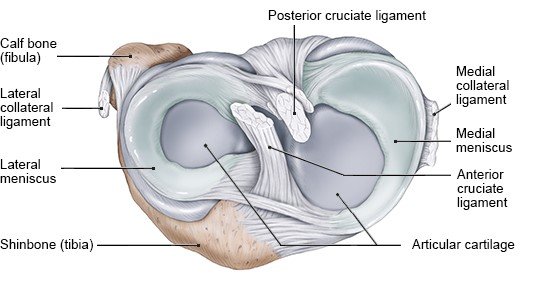If you have a torn ACL, the first thing you should do is rest the knee. Immediately after the accident, it should be elevated (raised) and cooled until the acute pain and swelling improve. A compression bandage and anti-inflammatory painkillers like ibuprofen can be a good idea too. In the first few days after the injury, crutches can take weight off the knee – especially if it’s very unstable.
A torn ACL can be treated in two main ways:
- Conservative treatment aims to strengthen the knee muscles so they can compensate for the torn ACL. Whether this is an option depends on whether other parts of the knee are injured too – and if so, which ones. After successful conservative treatment, you can usually put a normal amount of strain on the knee again within two to three months. How long it takes to return to sports depends on various factors, including the type of sport.
- Surgical treatment involves replacing the torn ACL. This procedure is known as ACL reconstruction. The doctor removes a piece of tissue from a tendon in your body and places it in the knee. This "graft" is usually taken from a tendon on the inner side of your thigh muscles, or sometimes from the patellar tendon or the quadriceps tendon. First, the doctor drills a tunnel or socket into the thigh bone and shinbone. The graft tissue is then anchored in place in the tunnel or socket using screws, buttons, or pins. It is attached in a position where it can take over the function of the original ACL as well as possible. Surgery is done using arthroscopy, where small surgical instruments are inserted through several cuts around the knee.
If you have surgery, it is usually done two to four weeks after the accident. Waiting this long allows the swelling and knee to calm down. If it’s still stiff, swollen, or inflamed when surgery is done, the tissue in the knee may harden and later reduce the knee's range of motion. Because of this, certain exercises are done before surgery, to improve the knee’s range of motion and strengthen the muscles.
After surgery, a rest and rehabilitation phase is needed. This takes four to twelve months, depending on the type of sport.
So far, there’s only one larger study that has compared conservative and surgical treatment. It showed that conservative treatment is successful in more than 50% of people over the long term – compared to 80% to 90% of people who have surgery. As far as we know, having conservative treatment first and then surgery later if needed doesn't have any knee function disadvantages. But the risk of further injuries, for example of a meniscus, is slightly higher after conservative treatment.
Medical or personal reasons to have surgery include the following:
- Wanting to continue doing intense sports after the treatment, such as competitive sports or sports that involve sudden changes in direction, turning movements, or rapid stopping.
- A more major injury to a meniscus, especially if it causes problems like a locked knee.
- If one of the collateral ligaments in the knee (medial or lateral) is torn too. Then the knee is usually so unstable that conservative treatment is not an option.
- Doing a job that puts a lot of strain on the knees – for example, a job that involves climbing a lot of stairs while carrying heavy objects, perhaps when delivering parcels or moving furniture.
Deciding whether or not to have surgery also comes down to personal preference. Some people very much want to avoid surgery and try to do without it. Others want to avoid the risk of needing surgery later, after conservative treatment, and would rather have surgery right away.



